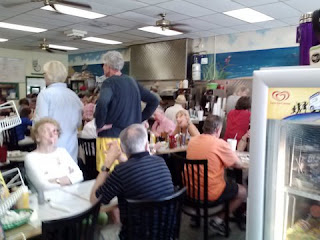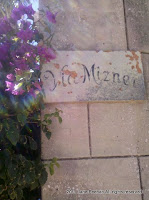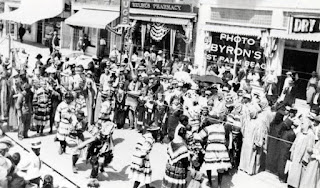Green's Pharmacy
151 North County Road
Palm Beach, FL
(561) 832-4443
Luncheonette and pharmacy
https://www.greenspb.com/
Luncheonette open - Monday-Saturday - 7-3; Sunday 7 am- 1 pm
Pharmacy – closed on Sundays
By Jane Feehan
The idle rich, working poor and all kinds in between rub elbows (well, almost) at this Palm Beach institution. Known for its old-fashioned lunch counter and simple dining room, Green’s is remembered as a place John F. Kennedy visited as a kid for lollipops and later for daily breakfast.
Opened in 1938 by brothers Bob and Murray Green, the Palm Beach 82-seat luncheonette continues to host diners who appreciate its good food, reasonable prices and lively atmosphere. Many also appreciate its history.
For some, walking into a place JFK frequented is reason enough for a visit. Kennedy and brother Bobby breakfasted there frequently as adults. JFK continued to visit the luncheonette as President and remained on first-name status with the owners. There were other famous faces at Green’s. In 1986, co-founder Bob Green told a reporter that Bob Hope, Big Crosby and Ginger Rogers had also been among the famous who stopped by for a meal or purchase.
Bob Green sold the business to Cunningham Drugs in 1986, a few years after brother Murray died. Since that sale, Green’s has been bought and sold a number of times. Bob Green passed away in 1990, but Green’s retains much of its original ambiance, including classic luncheonette fare and its pharmacy.
There are not many lunch counters around like Green’s where history is served with a milk shake, egg cream, malted, or a grilled cheese and tomato sandwich.
Tags: Historic places Palm Beach, breakfast in Palm Beach, lunch
in Palm Beach, JFK, Palm Beach history, Palm Beach restaurants
 |
| Busy at 12:30 |
Sources:
Palm Beach Daily News Jan. 4, 1986
Palm Beach Daily News, May 23, 1993
Sun-Sentinel May 4, 1990
Tags: history of Palm Beach, Palm Beach history




















